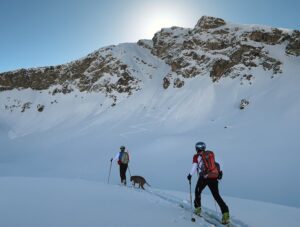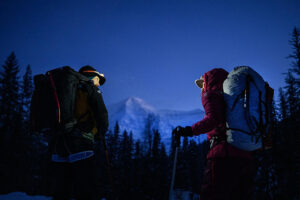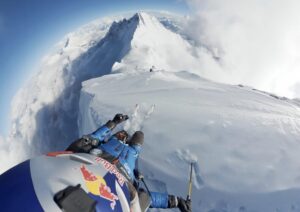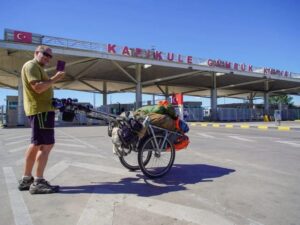Kilian Jornet, ultra runner, mountain runner, extreme skier, ski mountaineer, climber: With wins and records across all these disciplines, you’d be forgiven for thinking that the Catalan athlete is part human, part extra-terrestrial. In his latest feat last week in Molde, Norway, he skied 23,486m of elevation in 24 hours — at least 2,000m beyond previous marks, although Jornet himself notes that such records depend on the conditions and location.
Following, an abridged and edited version of Jornet’s own story of his lung-busting effort to ski loops for a solid day, of which more than 20 hours were steep uphill.
The Background
On February 8, I went to Molde to ski as many metres of elevation as I could in 24 hours. It’s usual for many athletes to feel curiosity about their body’s limits. I remember the 24-hour uphills done in the 1990s by Italian skyrunners in Val d’Isère, running up and going down with a lift. With skis, in 2007, Ekkehard Dörschlag achieved 17,476m in Bad Gastein. In 2011, Florent Perrier managed 18,255m in Arêches, Beaufort. In 2017, Mike Foote did 18,654m in Montana, and in 2017 Lars Erik Skjervheim accomplished 20,993m in Myrkdalen.

Jornet in full flow. Photo: Matti Bernitz/Lymbus
The Challenge
In the Tusten ski area, Molde. The starting elevation was 116m. There is a 12% slope for 60m, then a 315m climb of 26%. From here, it was off-piste and included a short, 30m flat section and a steep 30% climb. There were two loops, a long one of 4.4km with 550m of elevation, and a shorter, 3.6km one with a 428m gradient. The steeper the slope, the faster you can complete the metres. Fewer transitions means less time lost (15 seconds to take off the skins, 30 seconds to put them on). The conditions were sunny during the day and clear at night; temperatures between 2ºC and -2ºC.

Jornet’s Strava recording. Photo: Kilian Jornet
The Event
I started at 10.05am. I felt very good from the beginning. For the first six hours, it was difficult to not push and go faster. From there, and up to 8,000m, I was going at around 1,100m/hour (including uphill, downhill and transitions). I was feeling comfortable and relaxed. After seven hours, it became dark, and I decided to do the short loop during the night, since the upper part of the long loop started to become more difficult on the downhill.
From 8,000 to 13,000m my pace dropped slightly to 1,000m/hour. I was still feeling good but starting to push a bit. I was lucky to have company on the uphills from some of the guys from the Romsdal Randoneeklubb. From 13,000 to 16,000m, around 900m/hour, still feeling ok but sleepy at times. My eyes were closing, and I needed to concentrate. There were two loops in which I was feeling tired (820-802m/hour at 16 hours) so I took a short break. I still had energy, but my body started to feel worn out. After a 10-minute rest, I went up to 900m/hour for an hour, then dropped again to 828m for another hour before a second break.

Getting by with a little help from some friends. Photo: Kilian Jornet
With the finish approaching and revitalized after the break, I had more energy but needed to push very hard. I did the last four hours at around 950m/hour. In total, it was an average pace of 978.6m/hour, which I’m happy about, since my goal was to keep a steady pace. Also, I didn’t encounter many low moments, just a few during the night due to sleep deprivation. The uphill time itself averaged 1,065m/hour. That’s 64.1% of my VO2 max. I’m happy, since other 24-hour challenges in other sports are within the same range (Yiannis Kouros’ 24-hour record is 58.5% in a half-marathon; in a cycling 24-hour, it is 68% of the performance time.)
I recorded the activity on my Suunto 9 and shared the activity on Strava. There, it showed 23,112m and 195.72km; using detailed topography and GPS elevation in a single loop, it came to 23,486m and 200.4km.
The key numbers
Maximum downhill speed was 115km/h and the distance was around 199km. It was light for 9 hours and dark for 15 hours! Ascent time was 20:02:41, and downhill time was 3:22:44.
Jornet’s words were taken and edited from a blog post on his website, which can be found in full here.






